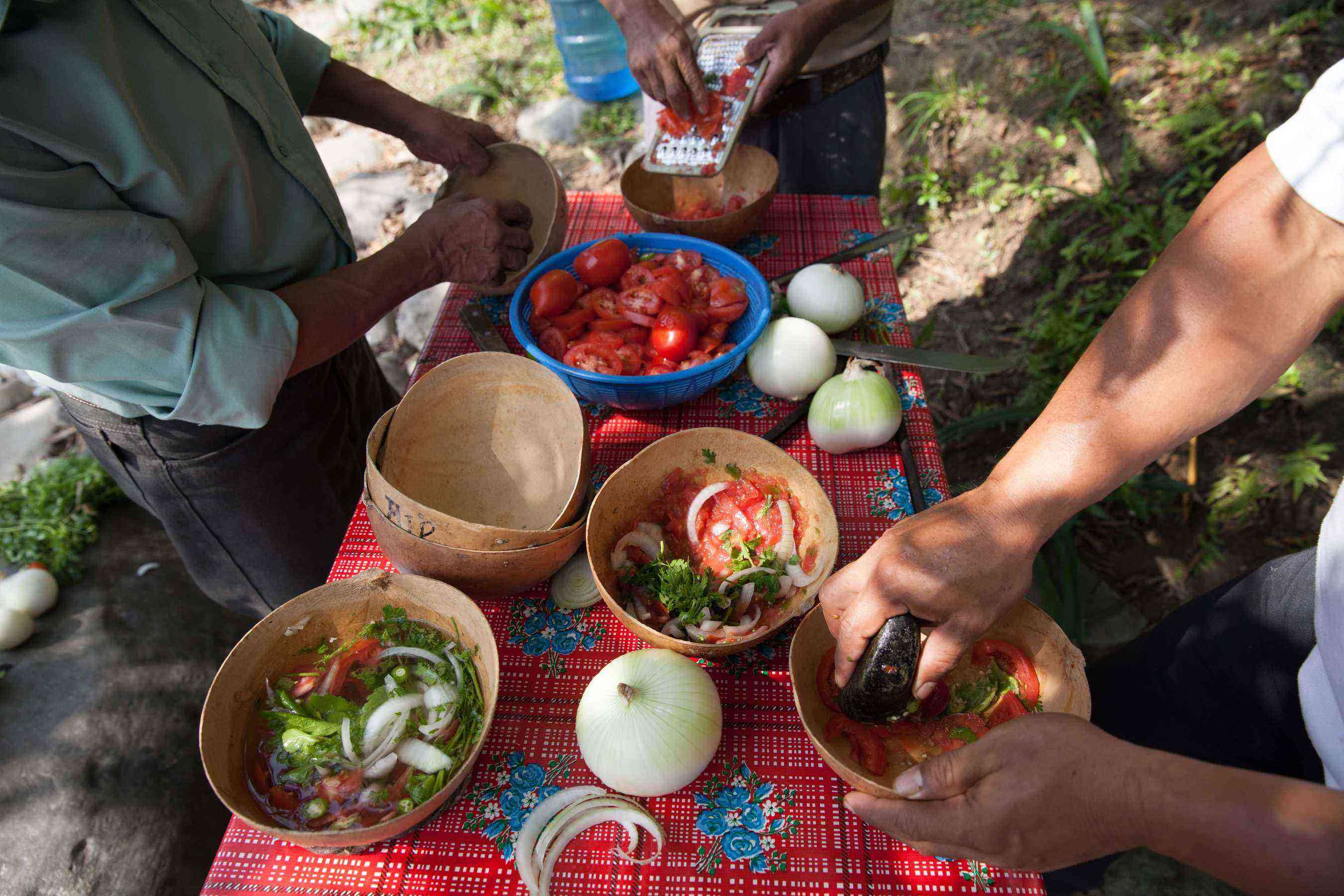Spoiler: It's hot rocks.
One story goes that hundreds or even thousands of years ago, well before the arrival of the Spanish conquistadors, Chinantec villagers from the remote Oaxacan hamlet of San Felipe Usila would load up canoes with items to sell in Tuxtepec, the market town a several-day journey downriver. On the way, they would camp on the shores of the Papaloapan river and make soup. But not just any soup: a soup that would become legend.
Spicy, smoky, savory and tinged with mineral notes from the stones, it’s intoxicatingly delicious.
The travelers used whatever was within reach: river water for the broth; fresh-caught fish and shrimp; tomatoes, onions, chiles, and herbs growing nearby; orangewood for the bonfire; and jicara, or gourds picked from nearby calabash trees, which, when hollowed out and dried, made perfect soup bowls. And the final ingredient? A special kind of white river stone that’s particularly good at conducting heat. When super-heated by the flames and dropped carefully into the gourds with all the other ingredients, the rocks boil the river water in minutes, cooking the fish perfectly and sending the heady aroma of garlic, cilantro, and chiles wafting downstream.
That’s how caldo de piedra (literally, stone soup) earned its name. Though its true origins are vague and hard to document precisely, it’s said that the soup is traditionally made by Chinantec men as a tribute to the village’s women and children. Today, caldo de piedra is a study in cultural and ecological change: Instead of fishing for tilapia in the river, Usileños now drive to the next town to purchase fish (or farm their own), since the construction of a nearby dam in the 1990s decimated their local supply. Families lug five-gallon bottles of purified water to the riverbank, fearing that the river water is no longer clean enough to cook with.
Recommended Fodor’s Video
Women increasingly participate in the preparation of the soup too, and the vegetables—typically stone-ground by hand—are now often mixed with the help of modern conveniences like blenders and graters.
When friends and family come back home to visit, residents say the shores of the river are lined with families who spend hours preparing and consuming the soup.
And yet, the soup remains a fundamental part of village life, used to bring families together on Sundays and holidays. Spicy, smoky, savory and tinged with mineral notes from the stones, it’s intoxicatingly delicious.
Intrepid travelers can travel to San Felipe Usila to sample the soup themselves, but getting there requires a mountainous 12-hour drive from Oaxaca City on roads that are only occasionally paved. The trip has its rewards, though, like the panoramic valley view from La Puerta del Cielo (The Door to Heaven). The town comprises just a few streets, with a couple of spartan hotels, a local bar or two, and a handful of casual comedors where caldo de piedra is served. During Semana Santa (Holy Week), when friends and family come back home to visit, residents say the shores of the river are lined with families who spend hours preparing and consuming the soup.
In recent decades, caldo de piedra’s fame has spread throughout the region and as far as L.A. Chefs and restaurateurs now serve less-rustic versions of the dish in white-tablecloth restaurants in the Oaxacan capital and Mexico City. There are a few places where you can try the famous soup, no off-roading required.
On the outskirts of Oaxaca city, Caldo de Piedra Restaurant is rustic spot is run by Cesar Gachupín, caldo de piedra’s unofficial ambassador. His family is featured in a documentary by Sarah Borealis. Casa Crespo is located in Oaxaca’s historic center and also serves the local soup. In Mexico City, visitors can try the famous dish at Restaurante El Lago. Rincón Oaxaqueño in Hollywood, California might be the only restaurant in the United States where you can try this traditional soup.
 Bénédicte Desrus
Bénédicte Desrus








